How We Pulled It Off: A Beachside Wedding in Goa With a Side of Bossa Nova

Despite having met as college students in Los Angeles and currently living in New York City, Mitali Gupta and Nick Ruzicka have always known they’d get married in India. Mitali grew up in Delhi, and always assumed she’d return to her native country for her wedding one day. For Nick, who is half-Indian and grew up in the Bay Area, it was a bit more complicated: his mother left the country at age 17 and his exposure to the culture was limited to less frequent visits to his grandfather.
The decision to hold their nuptials abroad, then, was not about reconnecting with heritage, per se. “It was about the joining of two families and a symbol of us going on an adventure, together, with everyone else,” Nick says. “The warmth you feel joining an Indian family is unparalleled to any culture.” Here, the couple share how they settled on a region of the subcontinent, embraced local vendors, and bridged cultural gaps over multiple events.
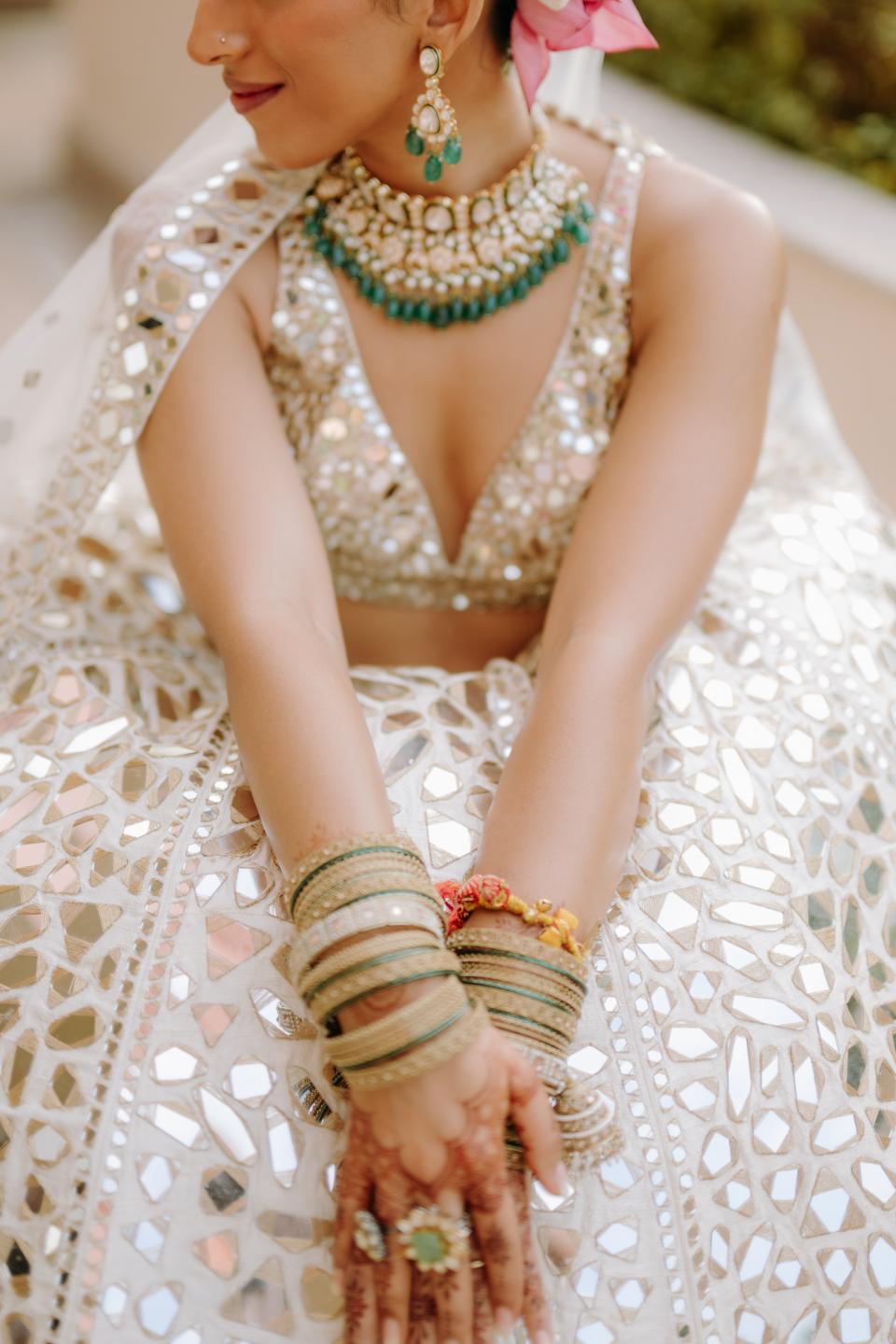
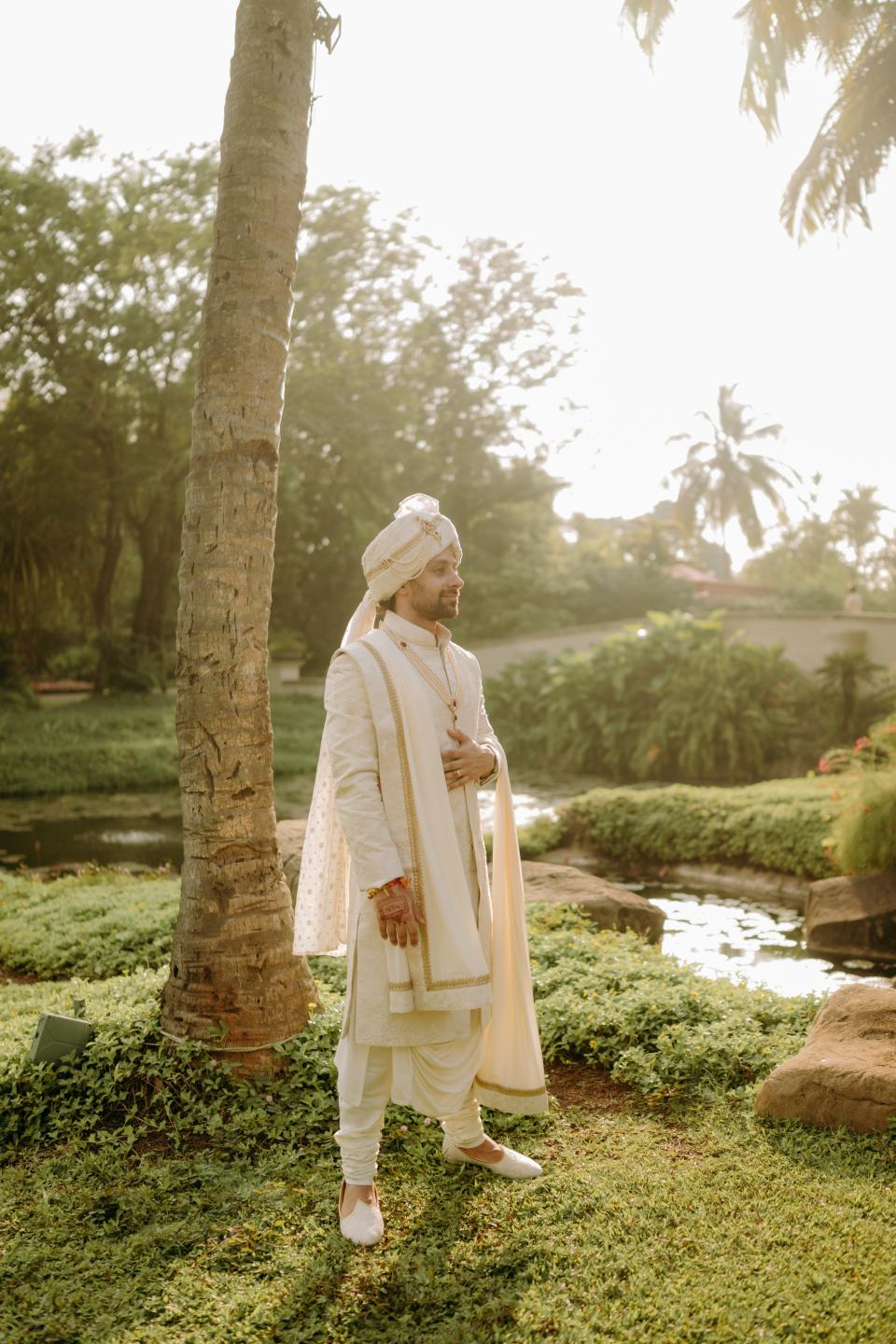
Choose a city based on your vibe
Mitali’s family is still based in Delhi, but the couple weren’t entirely sure where in India they wanted to hold the wedding. Indeed, the capital provided some logistical ease, but they also considered other major cities in the north before landing on Goa. “We’d been to a lot of weddings in Jaipur and Udaipur, and it was kind of cold. It also gets a little bit more stressful over there,” the bride explains.
Goa was a place that held warm memories for Nick, who had visited the state as a child, and it seemed like it would set a significantly more relaxed tone for their celebration. “We wanted our guests to feel like they were on a vacation. India can be a lot to handle for westerners unused to it,” he explains. Proximity to the beach would make it feel like a getaway—even for the Indian guests.
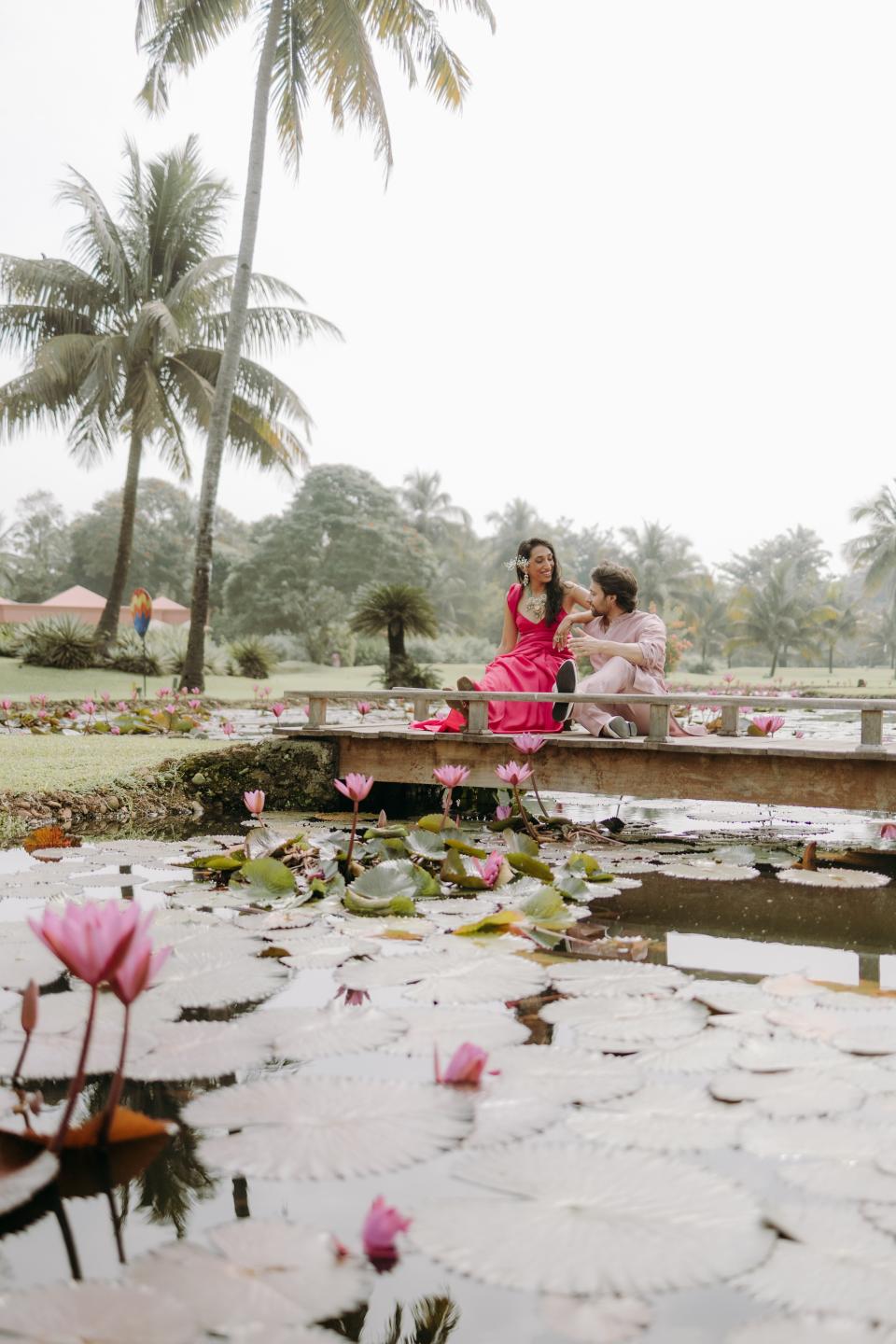
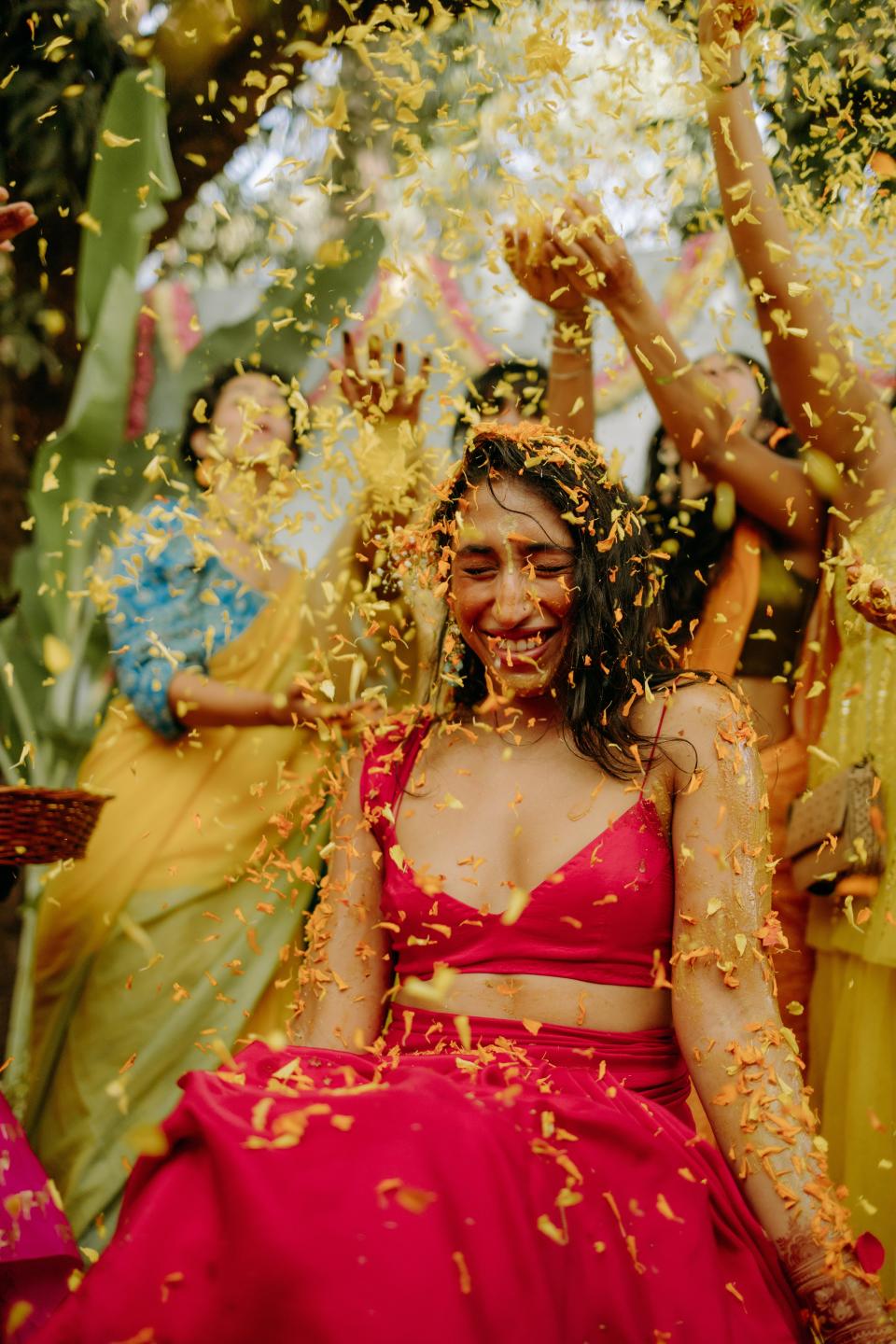
Have one event closer to home to appease some guests
Holding the wedding hundreds of miles from Delhi also allowed the couple to avoid the traditionally massive Indian wedding. Instead, their guest list clocked in between 120 and 150. “We wanted something a bit more intimate. We’re both very intentional people, and we wanted a chance to talk to everyone,” Mitali says. “We actually would’ve liked it to be under a hundred, but this was a good compromise with our parents, and we got to spend time with a lot of people this way.”
That said, the couple decided to host the sangeet, a night of song and dance performances, in Delhi before the rest of the celebration, which served two purposes. “We wanted that energy at the beginning,” says Mitali, “so we had a much larger sangeet with 250 people in Delhi for the people that either didn't get invited to the more intimate wedding, or for people who couldn’t make it [to Goa].”
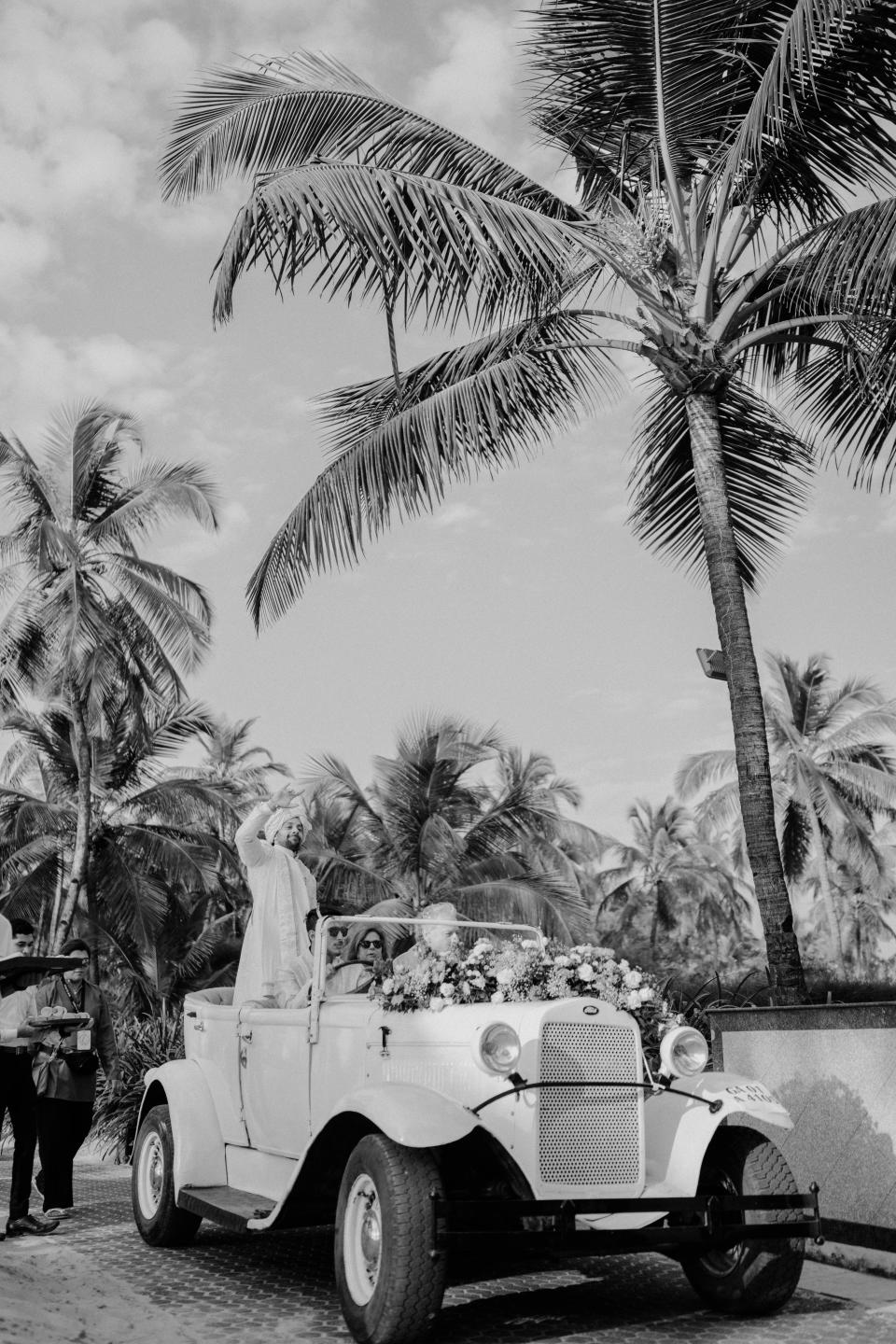
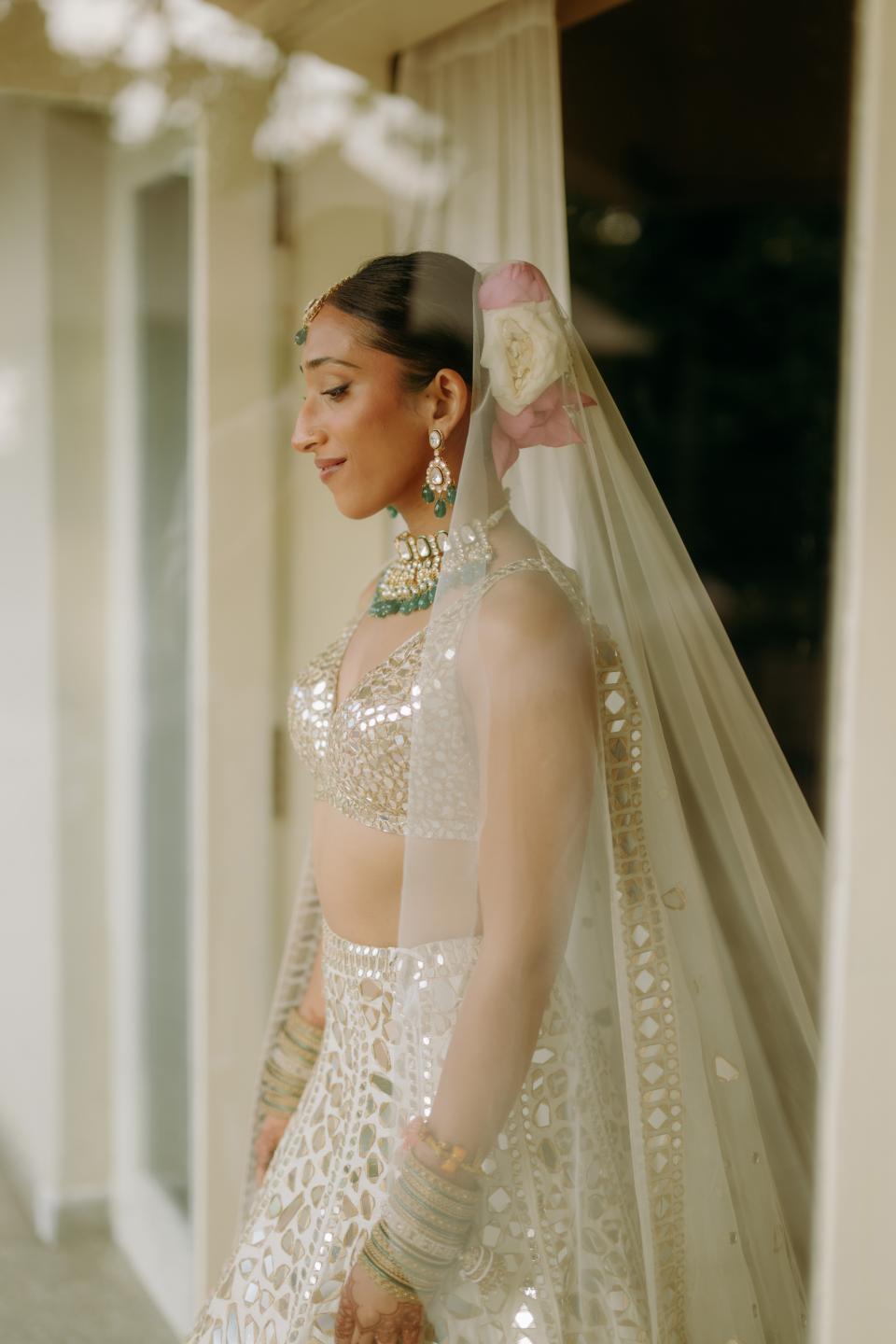
Take the time to visit venues in-person
Since the couple was hoping to host all of their wedding events—not to mention house their guests—on the same property, it was crucial they find just the right place. They opted to work with a travel agent at this stage, rather than a wedding planner, and took two trips to check out several resorts. “[The region] is divided into north and south: The north is the younger, partying spot, whereas the south is considered more of the luxurious, romantic area,” says Mitali. “The W was a strong contender, but it was in the north and had more of an upbeat vibe, and we wanted a romantic destination.”
They ultimately locked in the St. Regis Goa Resort for several reasons: It was actually on the beach, so they could hold at least one wedding event in the sand; the architecture and landscaping had more traditional Indian charm, while many other properties were cool and modern; and there were lotuses throughout, which is a flower the bride always happened to love. Plus, “It was… the farthest south in south Goa, meaning it was the most secluded, and the beaches around the property are not crowded,” says Nick. “The property had everything you needed for a close, intimate set-up.”
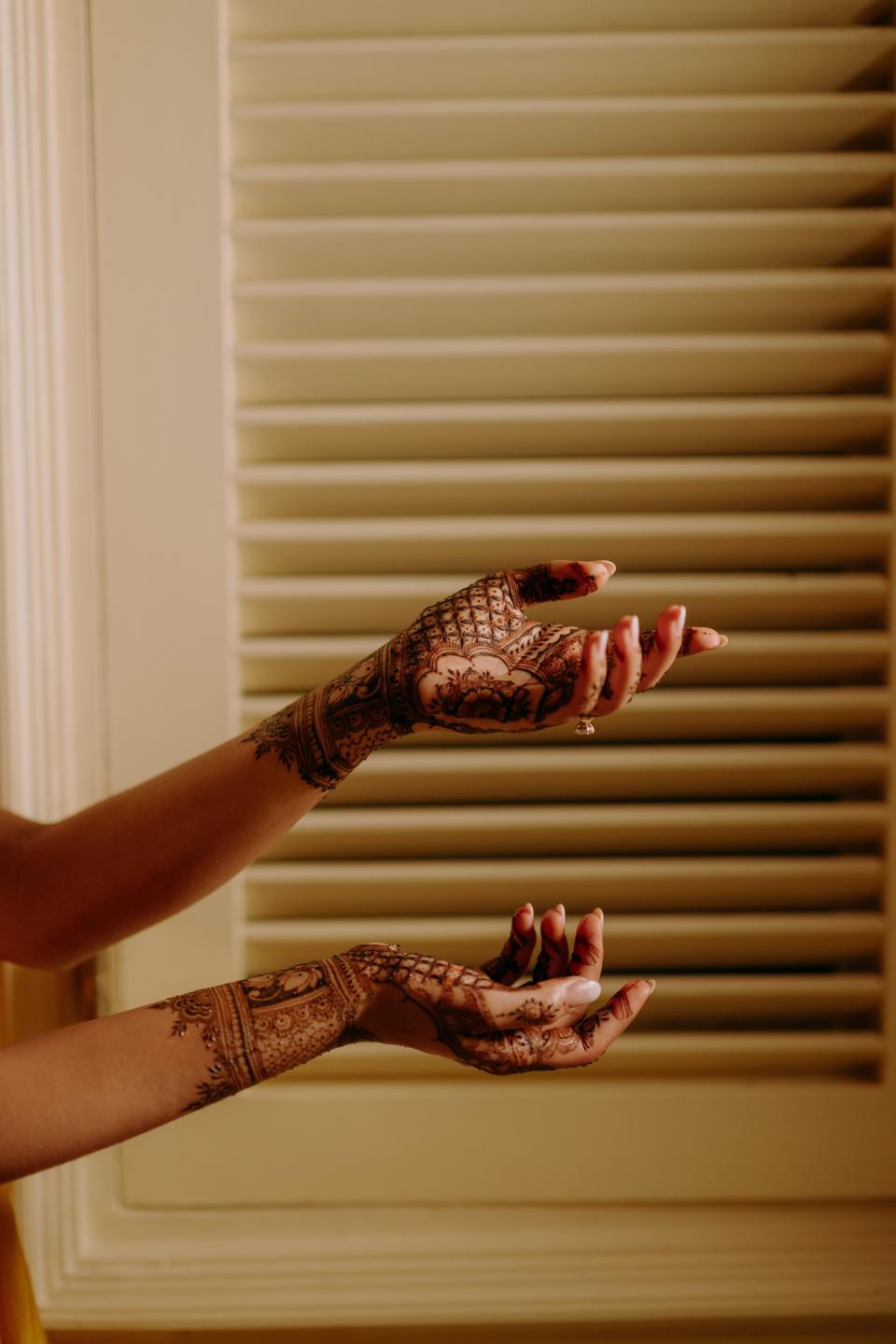
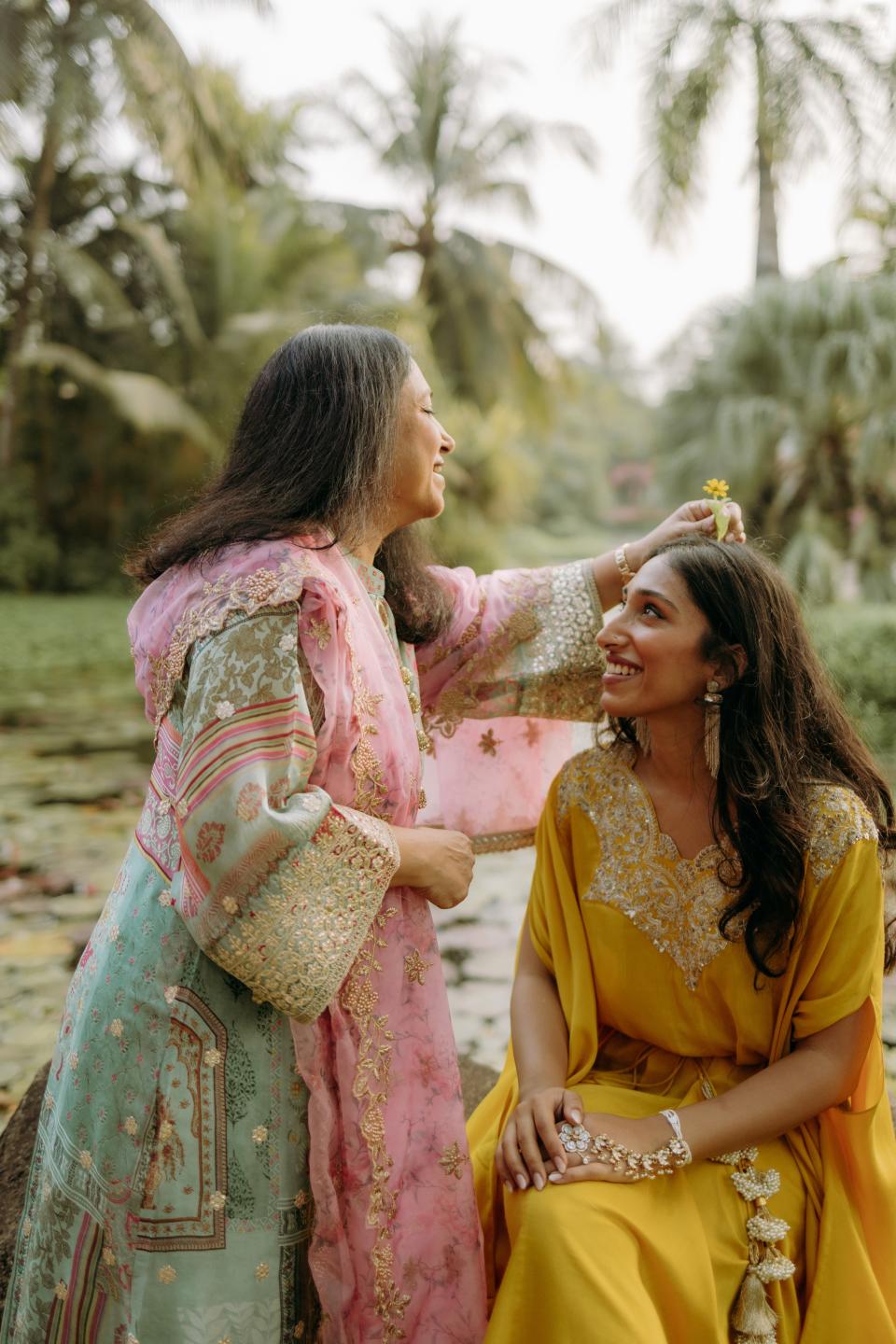
Go with a local wedding planner
The couple initially assumed they would work with a bigger, Delhi-based wedding planner to pull their events together. “Because it’s a bigger city that’s more exposed to international trends, I was at first keen on working with a Delhi-based company,” Mitali says. Ultimately, though, they went with VLW Global, a company they felt better understood some of the logistical concerns in the area—and was more reliably on the ground to tackle any issues that might come up. With that team in place, the bride only made two planning trips to the region in the year-and-a-half lead-up to the celebration. “The rest was all over Zoom,” she says.
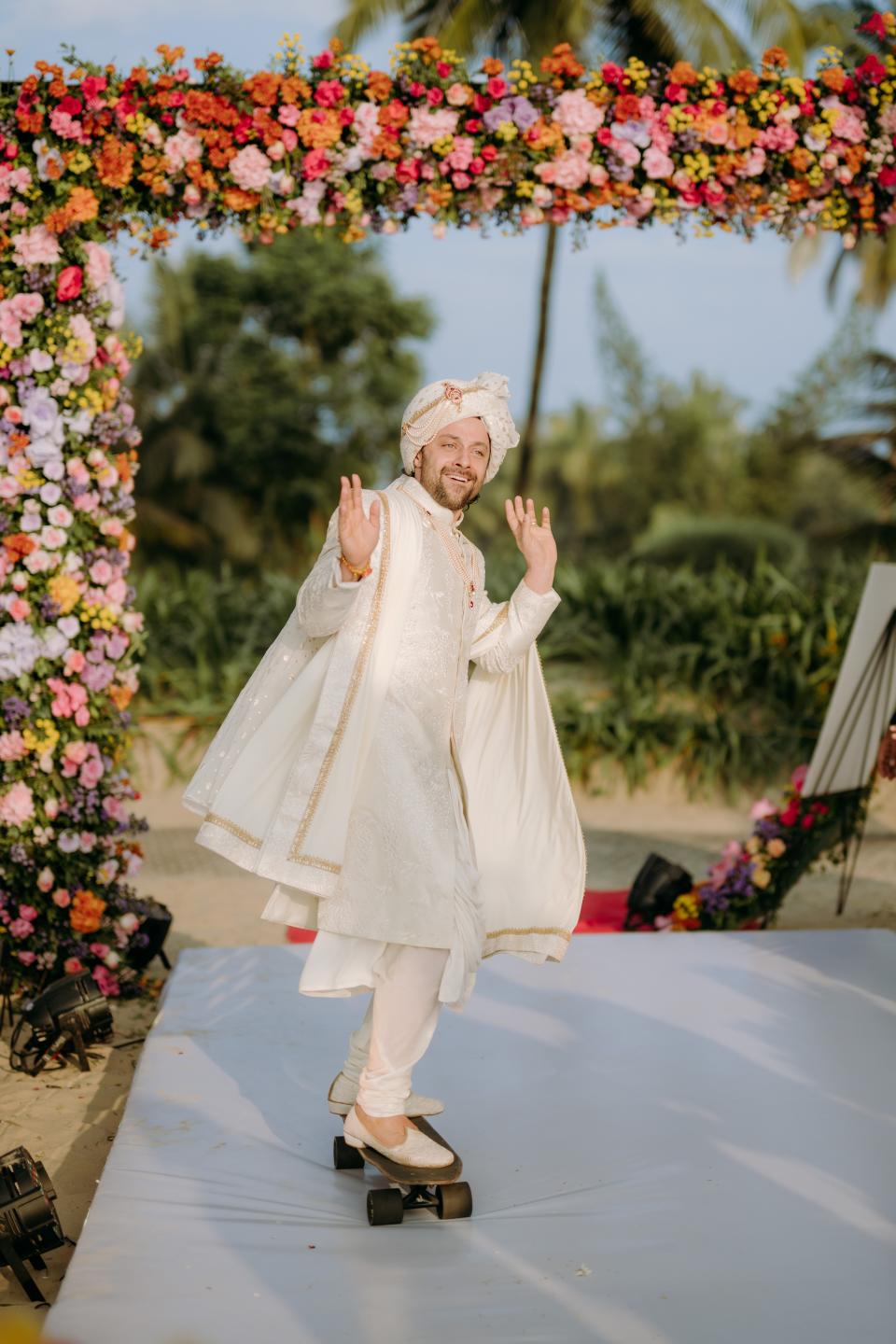
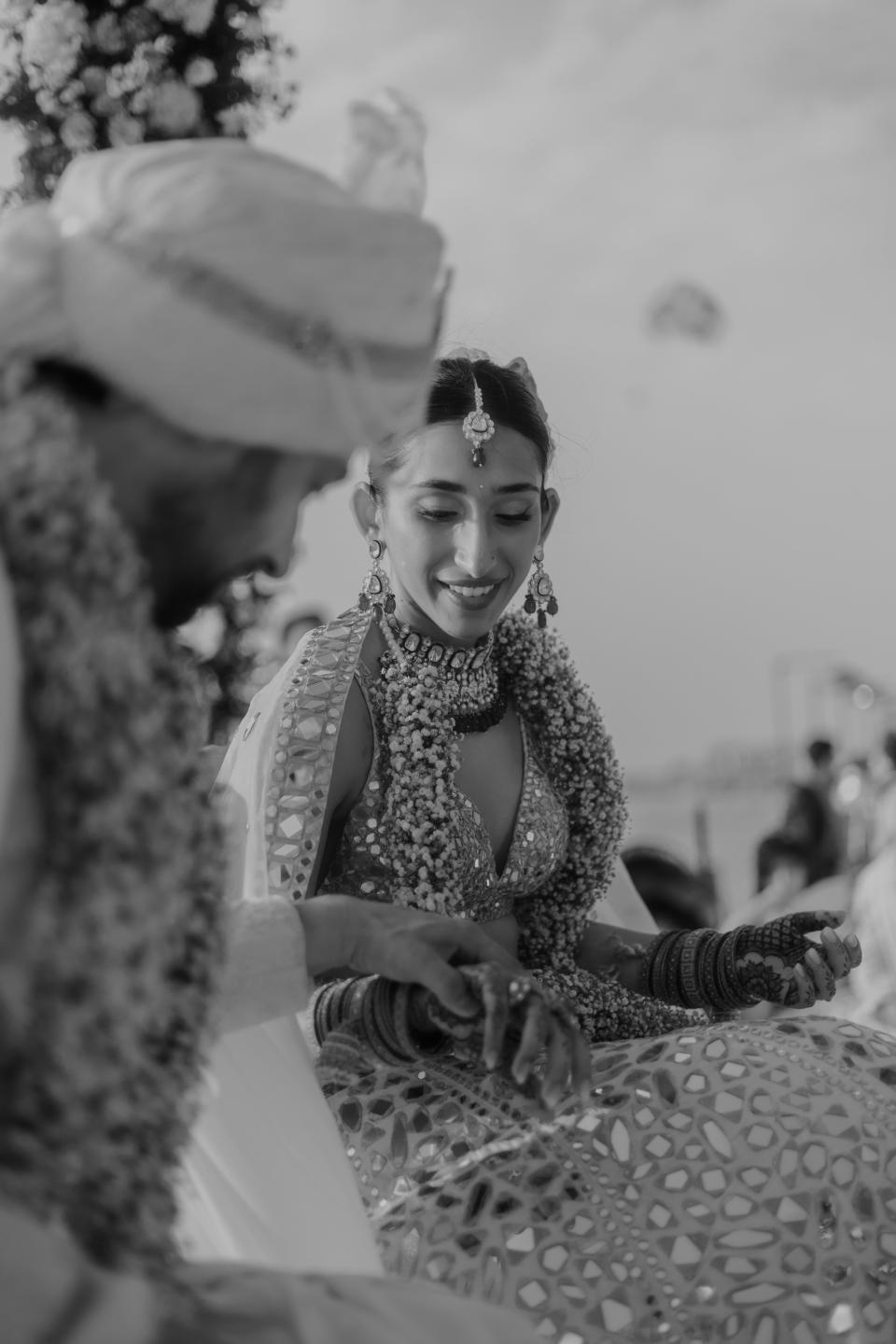
Prepare for limitations with local vendors
A trade-off of having their wedding in a more romantic location away from the bustling major cities was that there weren’t as many suppliers to choose from. Some vendors—including their photographer, Light Chamber; and Mitali’s makeup artist, Aman Mendiratta—were too important to compromise on, and the couple flew them out from Delhi. For others, they embraced Goan flavor.
“Goa has a really big art scene, and a lot of Portuguese history, so we decided to lean into that and found local DJs and musicians who added local flair,” says Mitali of hiring Portuguese samba and bossa nova band Sambucada and guitarist Bors Bey She also adapted her aesthetic visions to what was locally available; while she’d hoped to use a lot of mogra (or jasmine) flowers, the plant doesn’t grow as well in the beachy climate and was cost-prohibitive to fly in. Instead, they decorated with more of the lotuses that had made Mitali love the St. Regis in the first place.
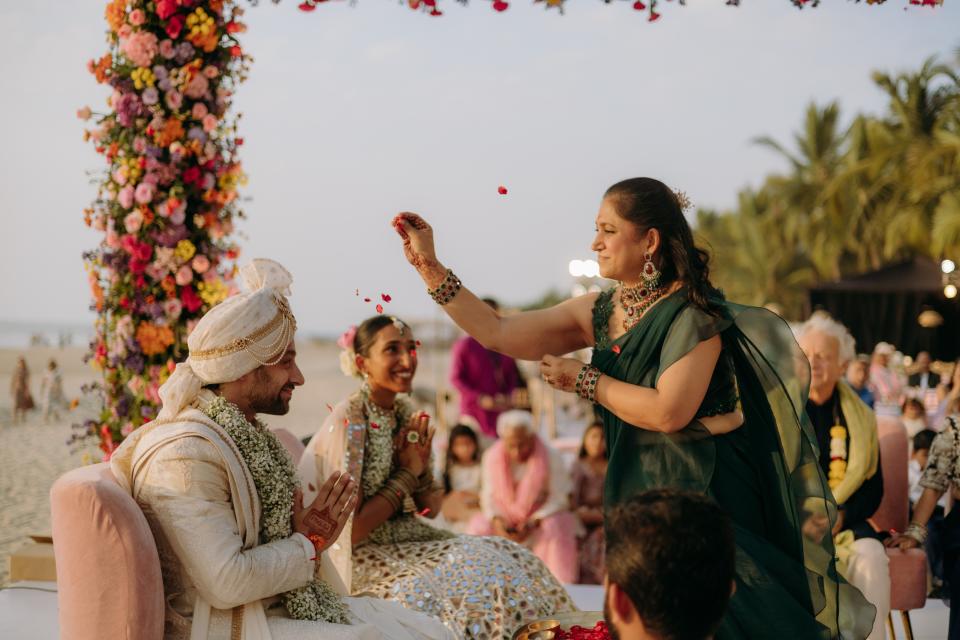
Anticipate a culture divide
Even though the groom is half-Indian and the bride grew up in the country, the couple still encountered some difficulty in communicating some occasionally more Western, modern needs to their wedding team. “We wanted some of the events to be more low-key or serene, while at Indian weddings it’s a lot more common to have dancing and DJs,” Mitali says. “That idea was very hard for people to understand. They kept trying to add dance floors, and we had to explain that that’s not [for us].”
A divide was also felt around the vow ceremony, particularly with the traditions recommended by the Hindu priest who led the proceedings. Parts of the vows didn’t fully align with the couple’s personal beliefs, but they managed to “finesse our way out of them” in the moments under the mandap (or altar), and didn't let the cultural differences dominate the moment.
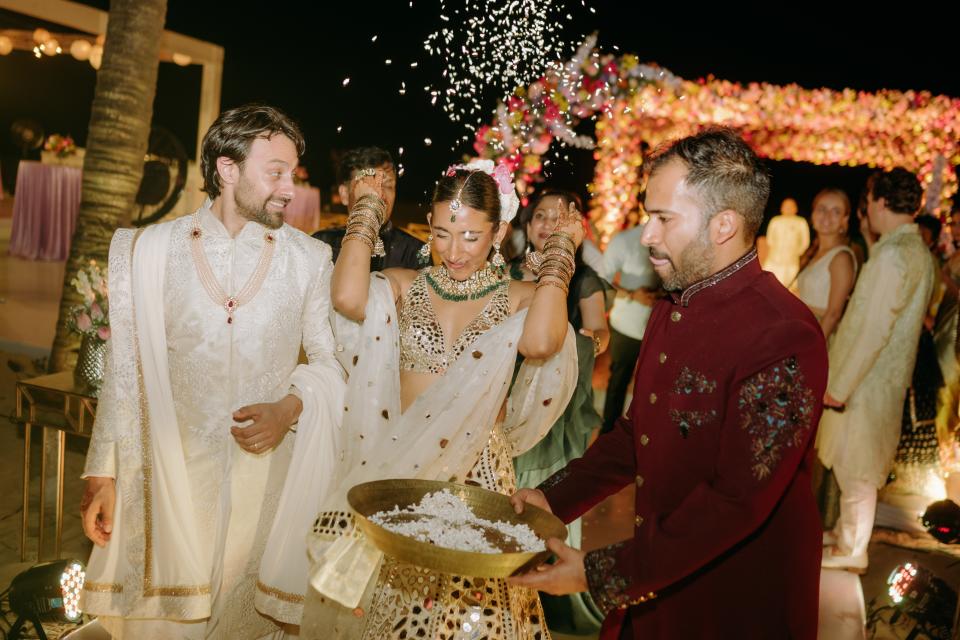
Make the rituals your own
Those minor instances aside, the couple were able to carve out nuptials that felt like them, and which welcomed in any guests who might have been unfamiliar with Indian weddings. Their priest translated and explained the ceremony in English as he went, and printed materials were distributed to guests so they could follow along as well. The bride chose to have both her parents walk her down the aisle, and wore a long, trailing veil—both of which are more common in modern American weddings.
But the moment that felt most memorably like them? When the groom approached the ceremony site not on a horse, as is traditional with the baaraat procession, but in a vintage car, followed by rolling up to the mandap on a skateboard. “I felt like I was pushing some boundaries there so I was happy to see the crowd get into it and seem excited about the variation on the tradition,” Nick says. “This was me adding a bit of California to the whole thing and we all thought it would be funny—which it was.” The image of Nick rolling through stands as a perfect encapsulation of their contemporary Goa celebration.
Originally Appeared on Condé Nast Traveler

